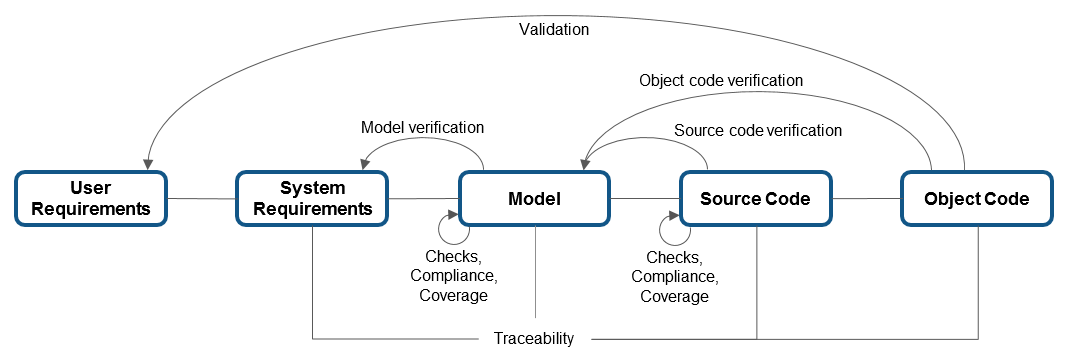验证并确认模型和代码
本教程介绍如何建立基于需求的模型测试的可追溯性、检查模型的合规性、测量测试覆盖率、生成测试以增加覆盖率以及生成和测试代码。在整个开发过程中验证您的模型和代码可以增强您所实现的系统满足设计需求和规范的信心。
在开发过程的早期,您可以创建一个高级系统模型,作为更详细模型的基础。您可以将模型中的项链接到系统需求以建立可追溯性,然后将该模型用作可执行规范。在验证模型时,您可以检查标准合规性、设计错误,并运行仿真以证明结果与预期输出相匹配。您可以编写测试、执行覆盖率分析来衡量测试完整性并生成其他测试。最后,您可以通过将系统原型连接到用户界面或工厂硬件并执行它来验证需求。
您还可以验证生成的代码和手写的代码。您可以检查代码是否符合标准、设计错误,并分析代码度量。然后,您可以创建测试并测量代码覆盖率来确定代码测试的程度。对于生成的代码,您可以运行相同的测试来验证您的模型以证明代码模型等效性。最后,您可以添加测试、改进系统和改进需求,直到设计完全发挥作用、没有表现出任何意外行为并且经过全面测试。
此图显示了如何在整个开发过程中使用验证和确认技术。

要验证和确认模型,请按照教程中的以下步骤操作:
另请参阅
主题
- 使用 Simulink 进行基于模型的设计 (Simulink)